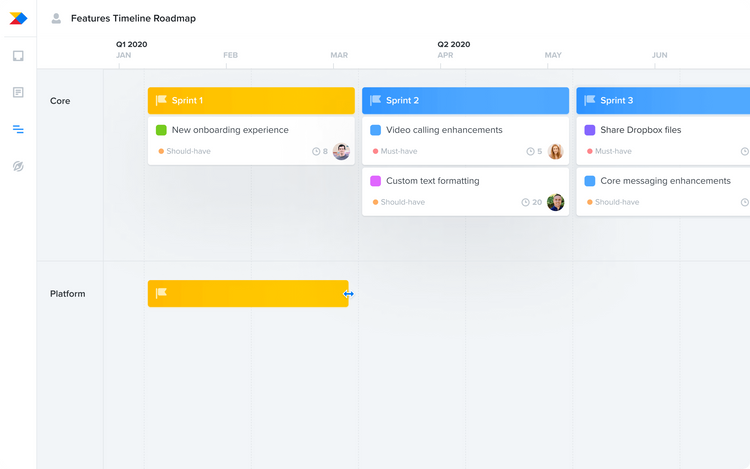The Best Product Management Software
We reviewed the top product management tools to improve your team’s collaboration, track project progress, and release higher-quality products.
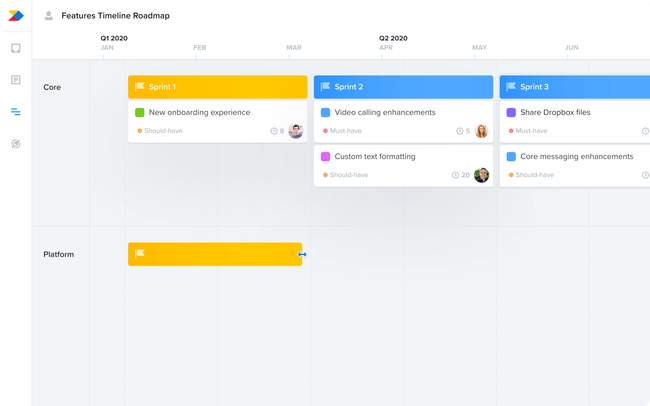
- Intuitive UI and customization
- Offers detailed progress tracking
- Integrates with Zendesk, Jira, Salesforce
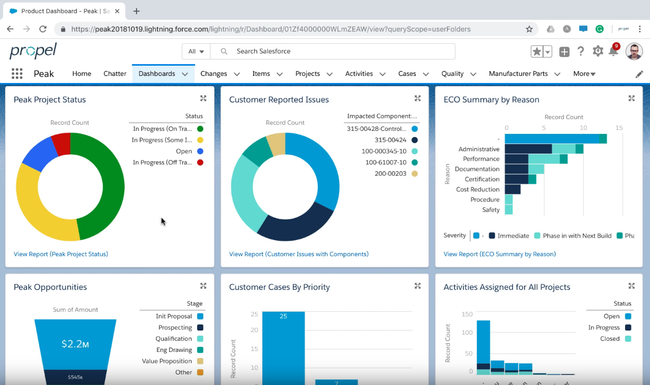
- Integrates with Microsoft Office and Google Suite
- Offers full PLM capabilities on mobile devices
- Supports processes like quality management, product information management, and project costing
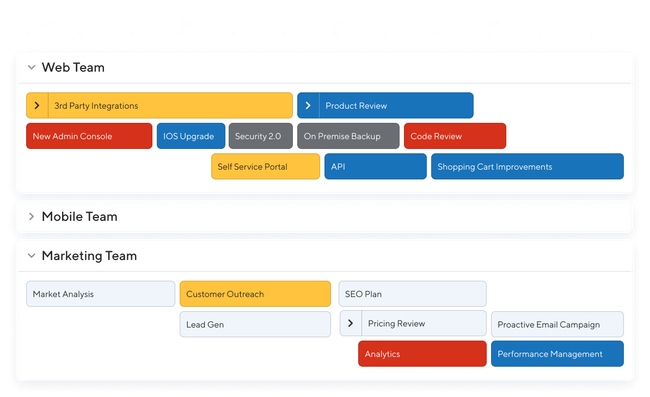
- Unlimited, customizable roadmaps
- Integrates with Azure DevOps, GitHub, Trello
- Unlimited custom views for different departments & audiences
We compiled a list of the top tools for agile project management, software development, and companies of all sizes.
- Productboard: Best Free Option
- Propel: Best PLM
- ProductPlan: Best for Large Businesses
Productboard - Best Free Option
Productboard offers a free starter plan that includes one team space, one product portal, and storage for up to 50 customer feedback notes. You’ll also get over 20 additional integrations with apps like Slack, Teams, and Zendesk. This plan accommodates unlimited contributors and viewers, making it easier for your team to collaborate on real-time product roadmaps.
With dynamic and adaptable roadmaps, Productboard adjusts your documents or slides as your priorities, timelines, and dependencies change. Using built-in templates, you can create multiple versions, each tailored to different groups like developers or marketing teams. Productboard also integrates with tools such as Jira to push prioritized features directly into development workflows and track progress all in one place.
We recommend Productboard for tech companies with at least fifty employees. However, for functionalities like release planning, customer feedback management, and email support, you’ll need a paid plan. The Essentials package starts at $19/maker/month billed annually; makers are users who have full access to the software and can add and edit roadmaps. In other words, upgrading unlocks advanced tools to help streamline product management as your team grows.
Propel - Best PLM
Propel delivers strong product development tools, including bill of materials (BOM) and change management. These help you and your team maintain a clear view of all product details, from modifications to suppliers.
With BOM management, Propel makes it easy to stay on top of revisions. Visual indicators highlight changes between versions, making it much easier to see what’s been removed or added. Additionally, this system has both hierarchical and table-based BOM structures, so you can view updates and affected components in a format that best suits your needs. Propel stores everything from hardware specifications to design history to pricing all in one place, cutting down time spent chasing down information.
Propel’s change management capabilities allow you to customize workflows to fit your processes, ensuring the right people view and approve changes. You can automate routing and notifications for change orders to save time. With mobile access from devices like phones or tablets, stakeholders can even give their input on the go.
Overall, Propel offers a high degree of contextual collaboration, meaning your entire team across departments can share ideas or changes. Built-in analytics measure project status and performance with configurable access controls to secure your data. Propel is built on Salesforce, which makes integration simple for those already using it. However, if you’re new to the Salesforce ecosystem, there may be an initial learning curve.
ProductPlan - Best for Large Businesses
ProductPlan is well-suited for businesses with over 100 employees. Ideal for sectors like software development and finance, this system includes unlimited, highly-visual roadmaps that you can customize for certain stakeholders, like executives or developers. You can even combine multiple roadmaps into a single overview to share with your team and communicate directly within the platform.
With its drag-and-drop functionality, updating priorities and timelines is fairly intuitive, helping your larger cross-functional teams stay aligned. You can use ProductPlan’s templates to create a timeline-based or list-based roadmap; then connect it to your tech stack with integrations for Azure DevOps, GitHub, Teams, Slack, and Trello.
You can block off project initiatives by time and date, using color coding to differentiate them; from there, users can click on initiatives to drill down into details like status, risk level, objectives, and ROI. This lets your team manage overlapping deadlines and align projects with broader goals, avoiding potential delays down the road.
Roadmaps in ProductPlan are unlimited, as are free viewer accounts and custom views for different audiences like sales and engineering. However, ProductPlan does charge for roadmap editors; a single editor license costs $49/month billed annually for the Basic plan. For larger teams, we recommend going with the Professional or Enterprise plan.
What is Product Management Software?
Product management software improves your company’s business processes when developing new products. Like product lifecycle management (PLM) software, this solution enables product managers and their production teams to collect new ideas, discuss ways to execute them into a finished product, and collaborate with other departments.
PLM solutions differ in that they focus on technical matters like prototyping, manufacturing or assembly issues, and eventual disposal. Product management software helps more with the conceptualization and communication elements of new product development. In particular, it is popular with agile project management methods, which keep production moving forward quickly to meet increasing demand.
Additionally, product management often refers to software development, rather than the production of physical products. However, some product management software is intended for either physical or virtual production. Regardless, product managers (PM) depend on software to automate the entire process from beginning to end to create better products.
Key Features
- Idea management: Share different concept ideas with team members and allow for editing and modification for improvements
- Prioritization: Determine which elements of production are most important and allocate resources to the completion of those tasks
- Roadmapping: Create an optimized pathway for all elements of production, from the initial design to the final product, by aiming all efforts at the most important tasks first; this may be accomplished through templates of Kanban boards, Gantt charts, or other organizational methods
- Task management: Assign different tasks to team members based on who is best suited to complete it and is available to work
- Resource management: Control which resources are used in production, such as physical assets, conceptual designs, and employee labor
- Communication and collaboration tools: Coordinate emails, text chats, and other digital forms of communication between team members, product managers, and clients or customers
- Release planning: Select accurate product release dates based on production progress and anticipate potential delays or setbacks
- Product portfolio tracking: Keep tabs on all products, from those still in development to those that have been completed and released
- Customer surveys and feedback: Gain insight into product performance directly from users through customer surveys
- Milestone tracking: Anticipate upcoming milestones to keep projects moving towards specific goals
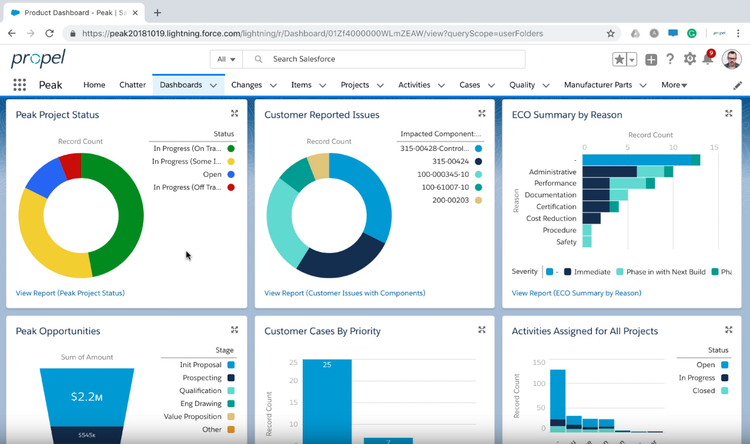
Benefits
Utilizing product management software can provide your production team with many useful modules for streamlining your business operations. Some of these product management tools provide benefits like:
Prioritize Workflow
The first step in developing any new product is to know where to start. From startups to multinational corporations, everyone begins with an idea and their product vision. Making it a reality may take months or years. This can entail lots of research and development, endless scrums, and multiple trips back to the literal drawing board.
Once you have a concrete idea, your product strategy needs to be carefully considered before any real work even begins. A product roadmap can establish the best pathway for workflow in both the short term and the long run. Address the entire lifecycle of the product to avoid any unexpected surprises.
Next, optimize your workload by prioritizing all the tasks necessary for completing your new product. Use product management software to determine what needs to be done first, move it to the front of the line, and make sure it gets started fast. Drag and drop tools let you instantly move tasks around to fit your prioritized schedule.
Additionally, product management software lets you account for backlog which may be holding parts of your project back. Real-time checks into your process can help you identify the causes of backlog and provide ideas for workarounds.
Clearer Communication
Messaging tools, ranging from text-based chats to video conferencing, make it easier for development teams to communicate and collaborate in real time. Thanks to cloud-based product management software, even remote workers can contribute more to production by being kept in the loop on the latest developments. Automated notifications can inform everyone when milestones are met or when a backlog is building.
Roadmaps built from custom templates, Kanban boards, or Gantt charts provide another way to streamline communication: visual production timelines. These can be presented to product teams, investors, or clients to confirm progress every step of the way. Remote access tools let you share these organizational methodologies from your workspace with anyone, anywhere, anytime.
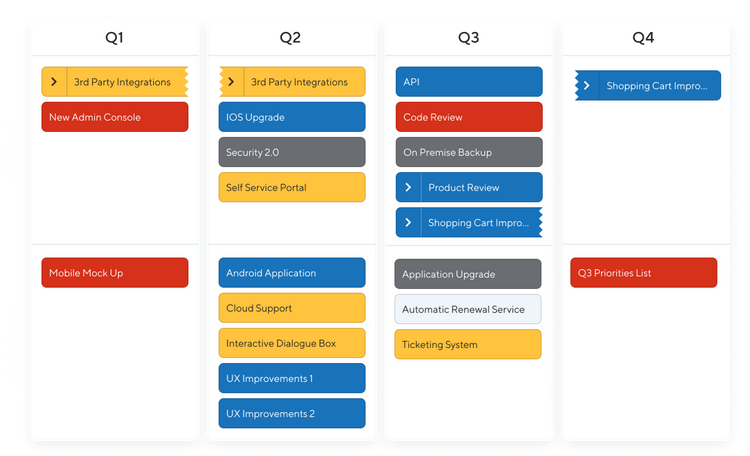
Create Higher Quality Products
Using product management software to improve your communication can lead to higher-quality products. This feedback is invaluable in modifying your product to better meet consumer needs. Product management tools like customer surveys allow you to measure satisfaction with product features and make adaptations based on their feedback.
The more customer feedback you gather, the more accurately you can address any potential issues. Even internal user feedback can be essential to learning what is necessary to design a better product. If you are specifically a software developer, product management systems can provide tools for user testing and bug tracking to reduce possible errors when launching your product.
For instance, you can build customer personas with product management software, letting you better personalize your offerings based on specific demographics. Each persona can be edited and customized based on feedback from real customers to provide more future knowledge when developing the next new product.
Pricing
Product management software pricing tends to follow the same pattern, with SaaS plans based on the number of users, makers, or admins using the platform. Plans may be as low as $19 per user or as high as $74 per user. Others have a capped monthly amount for a set number of users. Most solutions also offer discounts for annual subscription billing.
